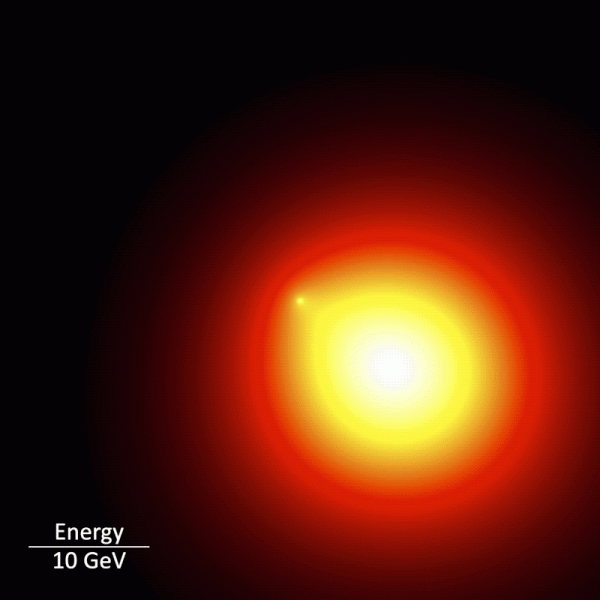Nearby pulsar a likely source of high-energy antimatter cosmic rays – Astronomy Now Online
Geminga is the name given to a pulsar 800 light years away that spins on its axis every 4.2 seconds. It is one of the brightest sources of pulsar-generated gamma rays, sporting a faint but vast halo that, if visible to human eyes, would appear 40 times larger than the full moon.
New research based on observations by NASA’s Fermi Gamma-ray Space Telescope indicates Geminga also may account for about 20 percent of the high-energy antimatter positrons that slam into Earth’s upper atmosphere as cosmic rays.
“Our analysis suggests that this same pulsar could be responsible for a decade-long puzzle about why one type of cosmic particle is unusually abundant near Earth,” said Mattia Di Mauro, an astrophysicist at the Catholic University of America in Washington and NASA’s Goddard Space Flight Center in Greenbelt, Maryland. “These are positrons, the antimatter version of electrons, coming from somewhere beyond the solar system.”
When massive stars run out of nuclear fuel, the outward push of fusion energy ends, gravity takes over and their cores collapse while the doomed sun’s outer layers area blown away in supernova blasts. If enough mass is present, nothing can stop a core’s collapse and a black hole is born. But just below that threshold, the result is a neutron star, a compacted remnant so dense protons and neutrons are crushed together.
Rapidly spinning neutron stars are known as pulsars, emitting beams of light that can sweep across Earth’s line of sight as they rotate. Pulsars have intense magnetic fields that pull particles from their surfaces, producing clouds of electrons and their antimatter counterparts, positrons.
For the past decade, Fermi, the Alpha Magnetic Spectrometer aboard the International Space Station and other instruments have detected more high-energy positrons in the cosmic ray population that predicted. Scientists earlier detected a small, high-energy gamma-ray halo around Geminga, but concluded it was an unlikely source of the positron excess.

But interest continued and a team led by Di Mauro carried out an analysis covering 10 years of Geminga data collected by Fermi, which observed lower-energy light than the radiation used in the previous study.
“To study the halo, we had to subtract out all other sources of gamma rays, including diffuse light produced by cosmic ray collisions with interstellar gas clouds,” said Silvia Manconi, a postdoctoral researcher at RWTH Aachen University in Germany. “We explored the data using 10 different models of interstellar emission.”
What remained when the other sources were removed was a vast glow spanning about 20 degrees of the sky – roughly the size of the Big Dipper – at an energy of 10 billion electron volts.
“Lower-energy particles travel much farther from the pulsar before they run into starlight, transfer part of their energy to it and boost the light to gamma rays. This is why the gamma-ray emission covers a larger area at lower energies,” said Fiorenza Donato at the Italian National Institute of Nuclear Physics and the University of Turin. “Also, Geminga’s halo is elongated partly because of the pulsar’s motion through space.”
The researchers conclude Geminga alone could account for up to 20 percent of the high-energy positrons detected by the Alpha Magnetic Spectrometer in low-Earth orbit. The research was published in the journal Physical Review D.






